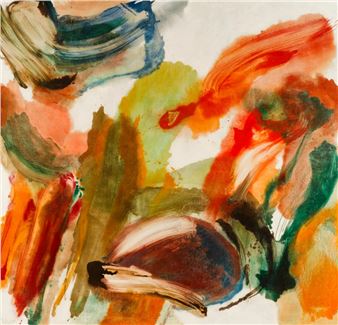In Excess: An Exuberance of Philippine Art
Gajah Gallery Singapore is delighted to present In Excess, its first group show featuring contemporary artists based in the Philippines. Curated by Joyce Toh, this exhibition revels in “excess” – in its manifold meanings and multitude of connotations – and teases out the tensions of its negative and positive implications.
To exceed is to surpass expectations or limitations. Yet excess also conjures up greed, gluttony and glut – the afflictions of a contemporary world caught up in consumption.
Indeed, in the furore of modern life, notions of moderation, temperance and balance are upheld as rationales for the rational; to simplify and reduce are advocated as ways towards peace and well-being. But the minimalist moment is tenuous – somehow (but always), emptiness calls out to be filled. Aristotle postulated that “nature abhors a vacuum”. And while nature may not care for nothingness, it is perhaps a more human impulse to push for more, to go beyond, to have the cup runneth over.
It is never enough to ‘be enough’; full can still be a state of insufficiency.
The Latin term “horror vacui” gestures to an aesthetic whereby entire surfaces or spaces swarm with detail or patterning, and in folk art across varied cultures, there is a profusion of decoration and explosion of colour. Yet ornamentation and the grandiose are as much an artistic and aesthetic style deployed in contemporary art forms. Still, it is the skilled artist who exercises restraint in being redolent – an art of excess need not be one of chaos.
In the art of the Philippines, the aesthetic of excess cuts across generations, artistic movements and stratas of society. The modern artist Vicente Manansala’s iconic Jeepney (1951) evoked excess through the crowded chaos of Manila’s streets in the years following the Second World War; the Cultural Center of the Philippines, built to project a front of progress for the nation, came to exemplify the extravagant constructions of an “edifice complex”. In superlative words and grammar like “sobra” and “napaka”, it points to an adding on and a multiplication: that life lived is one that is always pushing at the edges.
The ideas of “excess” proliferate. This exhibition of Philippine art critiques and celebrates its conundrums, complications and paradoxes.
Excess: it’s too much. Or, maybe, it’s not enough.

Recommended for you
Gajah Gallery Singapore is delighted to present In Excess, its first group show featuring contemporary artists based in the Philippines. Curated by Joyce Toh, this exhibition revels in “excess” – in its manifold meanings and multitude of connotations – and teases out the tensions of its negative and positive implications.
To exceed is to surpass expectations or limitations. Yet excess also conjures up greed, gluttony and glut – the afflictions of a contemporary world caught up in consumption.
Indeed, in the furore of modern life, notions of moderation, temperance and balance are upheld as rationales for the rational; to simplify and reduce are advocated as ways towards peace and well-being. But the minimalist moment is tenuous – somehow (but always), emptiness calls out to be filled. Aristotle postulated that “nature abhors a vacuum”. And while nature may not care for nothingness, it is perhaps a more human impulse to push for more, to go beyond, to have the cup runneth over.
It is never enough to ‘be enough’; full can still be a state of insufficiency.
The Latin term “horror vacui” gestures to an aesthetic whereby entire surfaces or spaces swarm with detail or patterning, and in folk art across varied cultures, there is a profusion of decoration and explosion of colour. Yet ornamentation and the grandiose are as much an artistic and aesthetic style deployed in contemporary art forms. Still, it is the skilled artist who exercises restraint in being redolent – an art of excess need not be one of chaos.
In the art of the Philippines, the aesthetic of excess cuts across generations, artistic movements and stratas of society. The modern artist Vicente Manansala’s iconic Jeepney (1951) evoked excess through the crowded chaos of Manila’s streets in the years following the Second World War; the Cultural Center of the Philippines, built to project a front of progress for the nation, came to exemplify the extravagant constructions of an “edifice complex”. In superlative words and grammar like “sobra” and “napaka”, it points to an adding on and a multiplication: that life lived is one that is always pushing at the edges.
The ideas of “excess” proliferate. This exhibition of Philippine art critiques and celebrates its conundrums, complications and paradoxes.
Excess: it’s too much. Or, maybe, it’s not enough.
Contact details

Related articles
From the website of the Philippine Embassy, “an estimated 200,000 Filipinos live and work in Singapore and actively contribute to the economic development of both the Philippines and Singapore.














